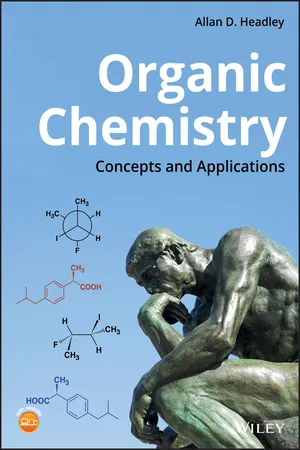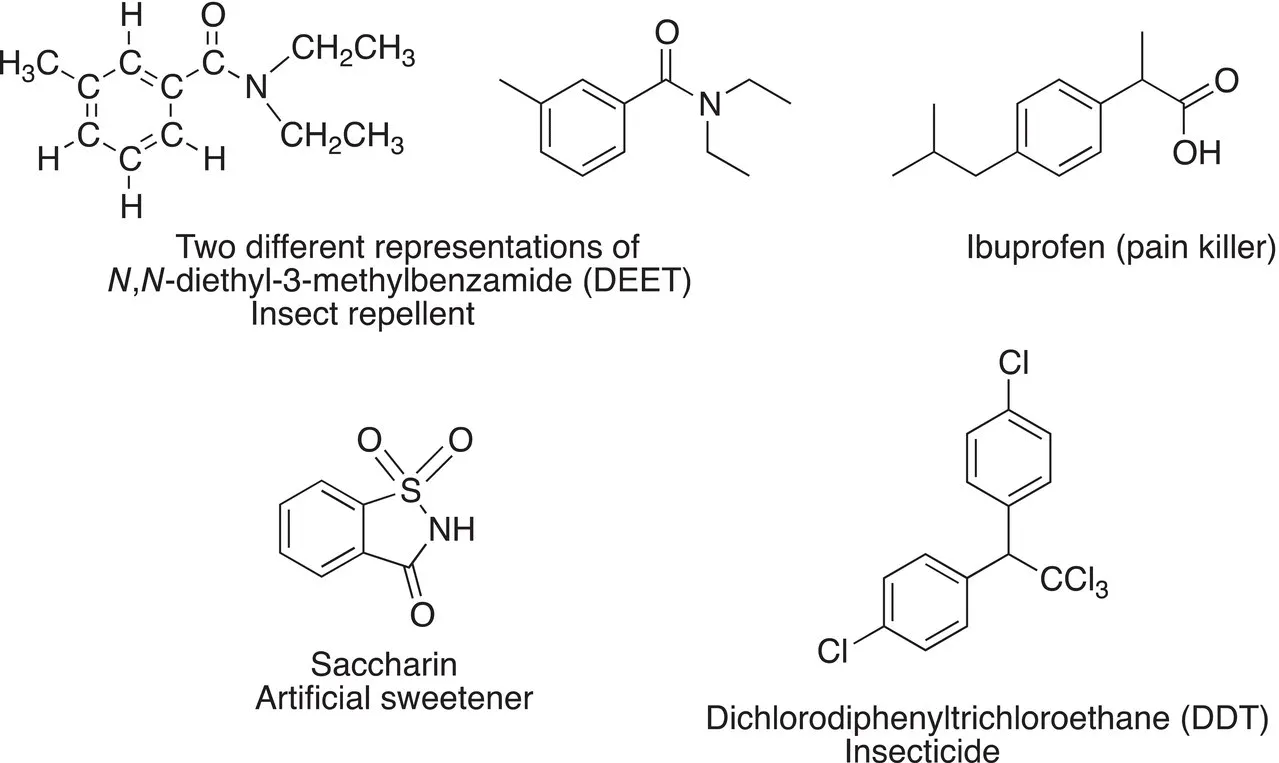
- English
- ePUB (mobile friendly)
- Available on iOS & Android
About This Book
Provides an in-depth study of organic compounds that bridges the gap between general and organic chemistry
Organic Chemistry: Concepts and Applications presents a comprehensive review of organic compounds that is appropriate for a two-semester sophomore organic chemistry course. The text covers the fundamental concepts needed to understand organic chemistry and clearly shows how to apply the concepts of organic chemistry to problem-solving. In addition, the book highlights the relevance of organic chemistry to the environment, industry, and biological and medical sciences. The author includes multiple-choice questions similar to aptitude exams for professional schools, including the Medical College Admissions Test (MCAT) and Dental Aptitude Test (DAT) to help in the preparation for these important exams.
Rather than categorize content information by functional groups, which often stresses memorization, this textbook instead divides the information into reaction types. This approach bridges the gap between general and organic chemistry and helps students develop a better understanding of the material. A manual of possible solutions for chapter problems for instructors and students is available in the supplementary websites. This important book:
• Provides an in-depth study of organic compounds with division by reaction types that bridges the gap between general and organic chemistry
• Covers the concepts needed to understand organic chemistry and teaches how to apply them for problem-solving
• Puts a focus on the relevance of organic chemistry to the environment, industry, and biological and medical sciences
• Includes multiple choice questions similar to aptitude exams for professional schools
Written for students of organic chemistry, Organic Chemistry: Concepts and Applications is the comprehensive text that presents the material in clear terms and shows how to apply the concepts to problem solving.
Frequently asked questions
Information
1
Bonding and Structure of Organic Compounds
1.1 Introduction


DID YOU KNOW?


Table of contents
- Cover
- Table of Contents
- Preface
- About the Companion Website
- 1 Bonding and Structure of Organic Compounds
- 2 Carbon Functional Groups and Organic Nomenclature
- 3 Heteroatomic Functional Groups and Organic Nomenclature
- 4 Alkanes, Cycloalkanes, and Alkenes: Isomers, Conformations, and Stabilities
- 5 Stereochemistry
- 6 An Overview of the Reactions of Organic Chemistry
- 7 Acid–Base Reactions in Organic Chemistry
- 8 Addition Reactions Involving Alkenes and Alkynes
- 9 Addition Reactions Involving Carbonyls and Nitriles
- 10 Reduction Reactions in Organic Chemistry
- 11 Oxidation Reactions in Organic Chemistry
- 12 Elimination Reactions of Organic Chemistry
- 13 Spectroscopy Revisited, A More Detailed Examination
- 14 Free Radical Substitution Reactions Involving Alkanes
- 15 Nucleophilic Substitution Reactions at sp3 Carbons
- 16 Nucleophilic Substitution Reactions at Acyl Carbons
- 17 Aromaticity and Aromatic Substitution Reactions
- 18 Conjugated Systems and Pericyclic Reactions
- 19 Catalytic Carbon–Carbon Coupling Reactions
- 20 Synthetic Polymers and Biopolymers
- Index
- End User License Agreement